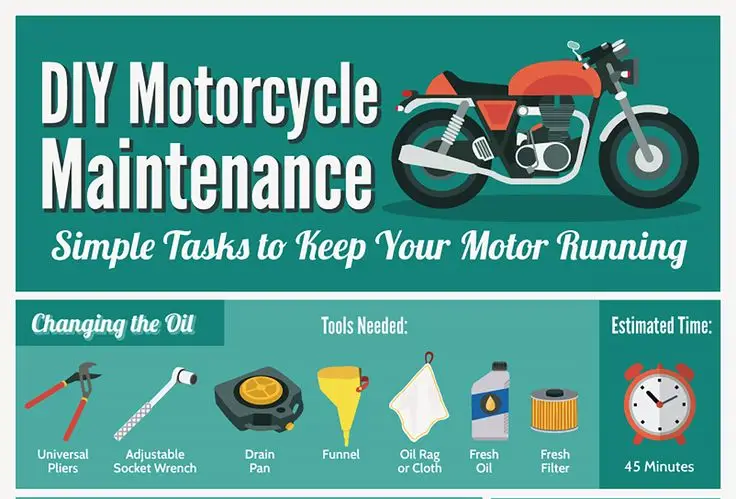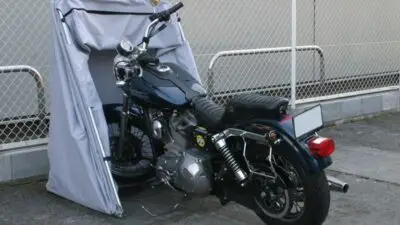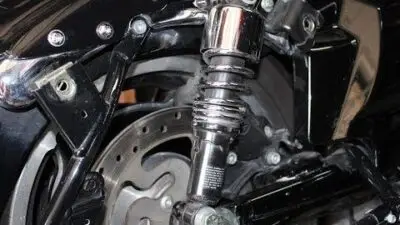Riding a motorcycle is an exciting experience that combines freedom with responsibility. One of the most important responsibilities of motorcycle ownership is keeping up with regular maintenance. Following your motorcycle’s recommended service intervals isn’t just about extending its life—it’s essential for your safety on the road and can save you significant money in the long run.

Manufacturers design specific maintenance schedules based on their extensive testing and engineering knowledge. These intervals aren’t arbitrary—they’re carefully calculated to ensure optimal performance and reliability. When riders ignore these recommended intervals, they risk not only expensive repairs but also dangerous mechanical failures that could lead to accidents.
Even experienced riders sometimes overlook the importance of regular servicing, especially for components that seem to be working fine. However, issues like carburetor problems or subtle changes in brake performance might not be noticeable until they become serious concerns. Taking a proactive approach to maintenance by following the manufacturer’s guidelines helps identify potential problems before they compromise your safety or enjoyment.
Key Takeaways
- Regular motorcycle maintenance according to manufacturer schedules significantly improves rider safety and extends vehicle lifespan.
- Service intervals aren’t arbitrary suggestions but carefully calculated requirements based on engineering specifications and testing.
- Preventative maintenance costs less than emergency repairs and helps identify potential issues before they lead to breakdowns or accidents.
Understanding Motorcycle Maintenance Intervals
Maintaining your motorcycle according to specific time and mileage intervals is crucial for optimal performance and longevity. Regular servicing helps prevent unexpected breakdowns and keeps your bike running safely on the road.
What Are Maintenance Intervals?
Maintenance intervals are specific timeframes or mileage points when your motorcycle needs particular service tasks performed. These intervals are established by manufacturers based on extensive testing and engineering data.
Most motorcycles require service based on both time and mileage, whichever comes first. For example, an oil change might be recommended every 3,000 miles or 6 months.
Different components have different maintenance schedules. Items like oil changes, air filters, and chain adjustments need frequent attention, while valve adjustments and major services occur at longer intervals.
Regular maintenance ensures optimal performance, safety, and longevity of your motorcycle. Ignoring these intervals can lead to accelerated wear, poor performance, and potential safety hazards.
Recommended Maintenance Schedule
A typical motorcycle maintenance schedule includes both minor and major service points:
Frequent Checks (Before Rides):
- Tire pressure and condition
- Brake function
- Lights and signals
- Oil level
- Chain tension and lubrication
Regular Service Items:
| Service | Typical Interval |
|---|---|
| Oil & Filter Change | 3,000-6,000 miles |
| Air Filter Cleaning | 6,000-12,000 miles |
| Chain Adjustment | 500-1,000 miles |
| Brake Fluid | Every 2 years |
| Spark Plugs | 12,000-15,000 miles |
Riders who use their motorcycles in extreme conditions (dusty environments, track days, etc.) should service their bikes more frequently. This helps compensate for the additional stress placed on components.
The first maintenance service for new motorcycles is especially critical as it addresses any initial settling and break-in concerns.
Manufacturer Guidelines for Service
Manufacturer service guidelines are found in your motorcycle’s owner manual and should be followed carefully. These specifications are designed specifically for your motorcycle model.
Service intervals can vary significantly between brands and even between models from the same manufacturer. For example, Ducati changed their service intervals from 6,000 miles to 7,500 miles between 2006-2007 for some models.
Modern motorcycles often feature service interval indicators on their dashboards. These systems track mileage and alert riders when maintenance is due.
Deviating from manufacturer guidelines can void warranties and potentially create safety issues. The manual specifies the correct fluids, parts, and procedures for your specific bike.
Professional dealership service technicians have model-specific training and diagnostic tools that ensure proper maintenance according to manufacturer standards.
Benefits of Regular Motorcycle Maintenance
Regular maintenance for your motorcycle delivers measurable improvements to performance, safety, and your wallet. Following manufacturer-recommended service intervals helps your bike operate at its best while preventing costly breakdowns.
Enhancing Engine Performance
Consistent maintenance directly impacts your motorcycle’s engine performance. Oil changes every 3,000 to 5,000 miles keep the engine properly lubricated, reducing friction and preventing overheating. This simple act maintains power delivery and fuel efficiency.
Air filter replacements ensure your engine breathes properly. A clean filter allows optimal air intake, which directly affects combustion quality and power output. Clogged filters force engines to work harder, reducing performance.
Spark plug maintenance is equally crucial. Fresh plugs provide stronger, more consistent sparks for better combustion and smoother running. Most manufacturers recommend checking them every 10,000 miles.
Proper valve adjustments prevent power loss and improve throttle response. While often overlooked, this maintenance task significantly impacts how the engine performs at all RPM ranges.
Improving Safety and Reliability
Regular maintenance substantially reduces the risk of mechanical failures that could lead to accidents. Tire inspections ensure the only contact points between your motorcycle and the road remain in optimal condition. Proper inflation and tread depth directly affect handling, braking distance, and stability.
Brake system maintenance is non-negotiable for safety. Regular fluid changes prevent brake fade, while pad inspections ensure stopping power remains consistent. Most manufacturers recommend brake fluid changes every 1-2 years.
Chain maintenance prevents dangerous situations like locked rear wheels from broken chains. Proper tension and lubrication extend chain life while maintaining smooth power transfer.
Electrical system checks prevent lighting failures and ensure all safety systems function properly. This includes verifying turn signals, brake lights, and horn operation—all critical for communicating with other road users.
Reducing Long-Term Costs
Consistent maintenance proves significantly more economical than reactive repairs. Small investments in regular servicing prevent major mechanical failures that typically cost hundreds or thousands of dollars to fix.
Following service intervals extends component lifespan dramatically. Parts like chains, sprockets, and bearings last substantially longer when properly maintained, reducing replacement frequency and costs.
Fuel efficiency improves with proper maintenance. Clean air filters, correct tire pressure, and well-adjusted engines consume less fuel, providing immediate cost savings during every ride.
Resale value remains higher for well-maintained motorcycles. Service records demonstrating adherence to manufacturer intervals make bikes more attractive to potential buyers and command premium prices in the used market.
Warranty protection often depends on maintenance compliance. Many manufacturers require proof of regular servicing to honor warranty claims, protecting your investment against unexpected defects.
Essential Fluid Checks and Changes
Your motorcycle depends on several key fluids to function properly and maintain peak performance. Regular inspection and replacement of these fluids can prevent costly repairs and extend your bike’s lifespan.
Engine Oil and Oil Change Intervals
Engine oil is the lifeblood of your motorcycle’s engine. It lubricates moving parts, reduces friction, and helps dissipate heat. Regular oil changes are critical for maintaining engine performance and longevity.
Most manufacturers recommend changing your motor oil every 3,000-6,000 miles, but this varies by model. Sport bikes and high-performance machines often need more frequent changes than cruisers.
Synthetic oil typically allows for longer intervals between changes compared to conventional oil. However, always follow your motorcycle’s specific maintenance schedule.
Check oil levels before each ride. The oil should appear clean and be at the proper level on the dipstick or sight glass. Dark, gritty oil indicates it’s time for a change regardless of mileage.
Signs you need an oil change:
- Dark, dirty appearance
- Metallic smell or visible particles
- Engine running hotter than usual
- Unusual engine noises
Coolant and Cooling System
Coolant prevents your engine from overheating and provides corrosion protection inside the cooling system. Fresh coolant should be added at least every other season, though specific maintenance intervals may vary.
Check coolant levels when the engine is cold. The reservoir should show fluid levels between the minimum and maximum marks.
Never remove the radiator cap when the engine is hot! This can cause severe burns from escaping pressurized coolant.
Most manufacturers recommend replacing coolant every 2 years or 24,000 miles. This prevents buildup of contaminants that reduce cooling efficiency and cause corrosion.
Use the manufacturer-recommended coolant type. Using the wrong formula can damage seals and internal components.
Inspect cooling system hoses for cracks, softness, or leaks during routine maintenance. Replace damaged hoses immediately to prevent overheating.
Transmission Oil Inspection
Transmission oil ensures smooth gear shifts and protects the transmission components from wear. Many motorcycles use the same oil for both engine and transmission, but some models require separate transmission fluid.
Check your owner’s manual to determine if your bike needs separate transmission oil and what type to use. Transmission oil typically requires less frequent changes than engine oil.
Most manufacturers recommend changing transmission oil every 5,000-10,000 miles. However, hard riding conditions may necessitate more frequent changes.
When checking transmission oil, look for metal particles which could indicate internal damage. The oil should appear clean and be at the proper level according to your motorcycle’s specifications.
Shifting problems like difficulty finding gears or unusual noises often indicate transmission fluid issues. Address these symptoms promptly to prevent expensive transmission repairs.
Brake System Maintenance
Your motorcycle’s brake system requires regular attention to maintain safety and performance. Proper inspection and maintenance of brake components can prevent accidents and costly repairs.
Inspecting Brake Pads and Brakes
Motorcycle brakes typically come in two main types: disc brakes and drum brakes. Riders should inspect brake pads regularly for wear and tear.
Most brake pads have wear indicators – small grooves that disappear when pads need replacement. When these indicators are gone, it’s time for new pads.
Thickness is another important factor. Brake pads thinner than 3-4mm should be replaced immediately. Ignoring worn pads can damage the rotors, leading to more expensive repairs.
Visual inspection should include checking for:
- Uneven wear patterns
- Cracks or damage
- Glazing or hardening
- Proper alignment with the disc
Brake calipers also need regular inspection. Look for leaks, sticking pistons, or corrosion that might affect braking performance.
Monitoring Brake Fluid
Brake fluid is critical to hydraulic braking systems and should be checked and replaced regularly. Most manufacturers recommend changing brake fluid every 1-2 years regardless of mileage.
When checking fluid levels, the reservoir should be between the minimum and maximum marks. Low fluid often indicates worn brake pads or a leak in the system.
The color of brake fluid matters too. Fresh fluid is clear to amber, while dark brown or black fluid needs immediate replacement due to contamination.
Always use the correct DOT-rated fluid specified in your motorcycle’s maintenance manual. Using incorrect fluid can damage seals and compromise braking performance.
Inspect rubber brake hoses for cracks or bulging and replace them every 3-5 years as preventative maintenance.
Protecting Against Wear, Tear, and Corrosion
Regular maintenance prevents damage to your motorcycle’s components through proper care and protection. Your bike faces constant threats from friction, exposure to elements, and dirt accumulation that can significantly reduce its lifespan if left unchecked.
Lubrication and Sealing
Proper lubrication helps prevent wear and tear by creating a protective barrier between moving parts. This barrier reduces metal-to-metal contact that causes friction and component damage.
High-quality lubricants should be applied to chains, cables, and pivot points according to your manufacturer’s schedule. For chains, apply lubricant every 300-500 miles or after riding in wet conditions.
Engine oil serves as your motorcycle’s primary internal lubricant. Premium engine oils offer better protection against wear, improved heat dissipation, and enhanced engine cleanliness. Follow the recommended oil change intervals—typically every 3,000-5,000 miles depending on your bike model.
Check and replace seals and gaskets when they show signs of degradation. These components prevent contaminants from entering crucial areas and keep lubricants where they belong.
Preventing Corrosion
Motorcycles are particularly vulnerable to corrosion from exposure to moisture, road salt, and environmental pollutants. Rust can quickly damage frame components, fasteners, and electrical connections.
Apply protective coatings like ACF-50 or corrosion inhibitors to metal surfaces, especially in hard-to-reach areas. These products create a moisture-resistant barrier that prevents oxidation.
Pay special attention to electrical connections. Apply dielectric grease to connectors to prevent moisture infiltration and electrical corrosion.
Store your motorcycle properly when not in use. A quality cover or climate-controlled garage significantly reduces corrosion risk. For long-term storage, consider using a fuel stabilizer to prevent tank and carburetor corrosion.
Cleaning for Longevity
Regular cleaning removes harmful substances that accelerate wear and corrosion. A clean motorcycle allows for better inspection and early problem detection.
Wash your motorcycle after exposure to road salt, mud, or rain. Use motorcycle-specific cleaners that won’t damage finishes or components. Avoid high-pressure washers that can force water into bearings and electrical systems.
After washing, dry thoroughly with microfiber towels and use compressed air for hard-to-reach areas. This prevents water spots and lingering moisture that can cause corrosion.
Apply appropriate protectants after cleaning: wax for painted surfaces, vinyl/rubber treatments for seals, and metal polish for chrome. These products create a protective barrier against environmental damage and help your motorcycle retain its value over time.
Maintaining Filters and Spark Plugs
Regular maintenance of your motorcycle’s filters and spark plugs is essential for optimal engine performance and longevity. These components directly impact fuel efficiency, power output, and overall reliability of your bike.
Air Filter Inspection and Replacement
The air filter prevents dirt, dust, and debris from entering your motorcycle’s engine. A clogged filter restricts airflow, which can reduce performance and increase fuel consumption.
Most manufacturers recommend inspecting your air filter every 3,000-6,000 miles, but this interval may be shorter if you ride in dusty conditions. When checking the filter, look for excessive dirt buildup, tears, or oil contamination.
Paper filters should be replaced when dirty, while foam filters can often be cleaned and reused. To clean a foam filter:
- Wash in warm soapy water
- Rinse thoroughly
- Allow to dry completely
- Apply filter oil according to manufacturer instructions
Always refer to your motorcycle’s manual for specific air filter maintenance schedules and procedures.
Oil Filter Changes
Oil filters trap contaminants that could damage your engine’s internal components. Regular oil filter changes are crucial for maintaining proper lubrication and extending engine life.
Most motorcycles require oil filter replacement every 3,000-5,000 miles or during each oil change. Using the wrong filter can lead to poor filtration or oil pressure issues.
When changing your oil filter:
- Ensure the engine is warm but not hot
- Drain the old oil completely
- Apply a thin film of oil to the new filter gasket
- Hand-tighten only—avoid over-tightening
Some motorcycles use easily accessible cartridge-type filters, while others may require removing fairings or other components for access. Always dispose of used oil filters properly at a recycling center.
Spark Plug Maintenance
Spark plugs create the electrical spark that ignites the fuel-air mixture in your engine’s combustion chambers. Worn or fouled plugs can cause poor starting, rough idling, and reduced power.
You should change motorcycle spark plugs every 5,000-10,000 miles or as specified in your owner’s manual. Signs that spark plugs need replacement include:
- Difficulty starting the engine
- Poor fuel economy
- Rough idle or misfiring
- Lack of acceleration
When inspecting spark plugs, check the electrode gap and look for deposits or unusual wear patterns. The color of the deposits can indicate various engine conditions:
| Plug Color | Potential Issue |
|---|---|
| Tan/Light Brown | Normal operation |
| Black/Sooty | Rich fuel mixture |
| White/Blistered | Engine running too hot |
| Oil-fouled | Possible valve seal/ring issues |
Always use the manufacturer’s recommended spark plug type and gap specifications for your motorcycle.
Tire Maintenance and Safety
Motorcycle tires require regular inspection and maintenance to ensure rider safety and optimal performance. Your tires are the only contact points between your bike and the road, making their condition critical to your riding experience.
Monitoring Tread Depth and Tread Wear
Tread wear indicators are built into motorcycle tires to help riders determine when replacement is necessary. These small raised bars become visible as the tire wears down, signaling it’s time for a change.
Most motorcycle tires should have at least 1/32 inch (0.8 mm) of tread remaining. Riders can use a tread depth gauge or the simple penny test to check this measurement.
Regular tire inspections help identify potential issues before they become serious problems. Look for uneven wear patterns, which often indicate alignment or pressure issues.
Tires should be replaced immediately if:
- Visible cracks appear in the sidewall
- Punctures exceed 6mm in diameter
- Tread wear indicators are visible
- The tire is more than 5-6 years old, regardless of tread depth
Proper Tire Pressure
Maintaining correct tire pressure is essential for motorcycle safety and performance. Underinflated tires wear faster, reduce fuel efficiency, and can overheat during rides.
Tire pressure should be checked when tires are cold, ideally before riding or after the motorcycle has been stationary for at least three hours.
The manufacturer’s recommended PSI (pounds per square inch) can be found in the owner’s manual or on a sticker typically located on the swingarm or frame.
Pressure should be checked weekly, as tires naturally lose 1-2 PSI per month even without riding. Temperature changes also affect pressure – approximately 1 PSI for every 10°F change.
Invest in a quality pressure gauge rather than relying on gas station equipment, which may be inaccurate from frequent use.
Frequently Asked Questions
Proper motorcycle maintenance ensures safety, performance, and longevity. These common questions address key aspects of keeping your bike in optimal condition through regular service intervals.
Why is it crucial to adhere to regular maintenance schedules for motorcycles?
Regular maintenance schedules detect potential problems before they become major issues. Following these intervals helps prevent unexpected breakdowns while riding, which could lead to dangerous situations on the road.
Regular maintenance preserves the value of your motorcycle over time. A well-maintained bike not only performs better but also retains more of its market value when it’s time to sell or trade.
Adhering to manufacturer-recommended service schedules ensures all systems function properly. This attention to detail extends the overall lifespan of the motorcycle and keeps it running efficiently.
What specific maintenance tasks are vital for optimal motorcycle performance?
Oil changes rank among the most essential maintenance tasks for any motorcycle. Clean oil ensures proper engine lubrication and prevents premature wear of critical components.
Tire inspection and maintenance, including proper inflation and tread checks, directly impact safety and handling. Riders should check tire pressure before every ride and inspect tread depth regularly.
Carburetor tuning every two years helps maintain optimal fuel delivery. This often-neglected maintenance task can prevent poor performance and difficult starting issues.
Chain maintenance, including cleaning, lubricating, and adjusting tension, prevents premature wear. A properly maintained drive system transfers power efficiently and reduces stress on other components.
How frequently should one perform oil changes on a motorcycle?
Most manufacturers recommend changing motorcycle oil every 2,000 to 3,000 miles for conventional oil. However, this interval may extend to 5,000-6,000 miles when using synthetic oil.
Riding conditions significantly affect oil change frequency. Motorcycles used in dusty environments, extreme temperatures, or for short trips may require more frequent oil changes.
Some motorcycle brands have changed their service intervals over time. For example, certain Ducati models shifted from 6,000-mile intervals to different specifications in the mid-2000s, highlighting the importance of consulting your specific model’s manual.
What are the common indicators that a motorcycle requires immediate servicing?
Unusual noises, particularly knocking, grinding, or whining sounds, indicate potential mechanical issues. These sounds should never be ignored as they often signal problems that could lead to major failures.
Performance changes like reduced power, poor throttle response, or difficult starting suggest maintenance is needed. These symptoms often relate to fuel delivery, ignition, or compression problems.
Visible fluid leaks under the motorcycle demand immediate attention. Oil, coolant, or brake fluid leaks compromise safety and can lead to catastrophic mechanical failures if left unaddressed.
What potential risks are associated with neglecting motorcycle maintenance?
Safety hazards represent the most serious risk of neglected maintenance. Failed brakes, worn tires, or steering issues can lead to accidents with potentially severe consequences.
Expensive repairs often result from postponing regular maintenance tasks. What begins as a simple fix can escalate into major component replacement when problems compound over time.
Reduced reliability leaves riders stranded in potentially dangerous situations. A breakdown far from home creates inconvenience at best and dangerous scenarios at worst, especially in remote areas or bad weather.
How does maintaining regular service intervals impact the resale value of a motorcycle?
Well-documented maintenance history significantly increases a motorcycle’s resale value. Potential buyers place premium value on bikes with complete service records showing adherence to recommended intervals.
Regular servicing preserves both mechanical condition and appearance. These factors directly influence a buyer’s perception of the motorcycle’s worth and their willingness to pay top dollar.
Bikes with spotty maintenance histories typically sell for 10-20% less than comparable well-maintained models. This price difference often exceeds the cost of regular maintenance over the ownership period, making proper care a sound financial decision.











